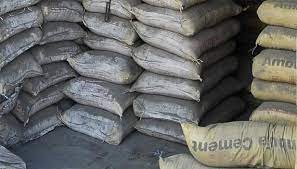13 Types of Cement and Their Uses
Cement is a fundamental building material used in construction projects worldwide. It serves as a binding agent in the creation of concrete and mortar, providing strength and durability to structures. There are various types of cement, each designed for specific applications, depending on factors like climate, project requirements, and construction techniques. Here are 13 common types of cement and their uses:
- Ordinary Portland Cement (OPC)
- Portland Pozzolana Cement (PPC)
- Rapid Hardening Cement
- Quick setting cement
- Low Heat Cement
- Sulfates resisting cement
- Blast Furnace Slag Cement
- High Alumina Cement
- White Cement
- Colored cement
- Air Entraining Cement
- Expansive cement
- Hydrographic cement
1. Ordinary Portland Cement (OPC)
Use: General-purpose construction, residential and commercial buildings, roads, bridges, and most construction projects.
OPC is the most commonly used type of cement, known for its versatility and strength. It’s suitable for a wide range of applications and is the primary choice for most construction projects.
2. Portland Pozzolana Cement (PPC)
Use: Hydraulic structures, marine construction, and projects in aggressive environments.
PPC contains pozzolanic materials like fly ash, which improve its durability and resistance to chemical attacks. It’s often used in projects where long-term strength and resilience are essential.
3. Rapid Hardening Cement
Use: Repair and maintenance work, precast concrete production, and cold weather concreting.
This type of cement sets and hardens rapidly, making it ideal for applications that require quick turnaround times. It’s commonly used in emergency repairs and projects with time constraints.
4. Low Heat Cement
Use: Massive concrete structures like dams and foundations.
Low heat cement generates less heat during the hydration process, reducing the risk of thermal cracking. It’s suitable for large-scale projects where temperature control is critical.
5. High Alumina Cement (HAC)
Use: Refractory construction, industrial furnaces, and chemical plants.
HAC contains a high percentage of alumina and sets quickly, even at low temperatures. It’s well-suited for applications that require resistance to high temperatures and corrosive substances.
6. White Cement
Use: Decorative and architectural applications, such as wall finishes, floorings, and terrazzo tiles.
White cement is used for its aesthetic appeal. It provides a smooth, clean finish and is often used in projects where color control is essential.
7. Sulfate-Resistant Cement
Use: Coastal areas, wastewater treatment plants, and regions with high sulfate content in the soil or water.
Sulfate-resistant cement is designed to withstand sulfate attack, making it suitable for environments where regular cement may deteriorate due to sulfate exposure.
8. Blast Furnace Slag Cement (BFSC)
Use: Mass concrete structures, marine construction, and projects requiring reduced heat of hydration.
BFSC incorporates blast furnace slag, a byproduct of the iron manufacturing process. It enhances workability, reduces permeability, and minimizes the risk of thermal cracking.
9. High-Early Strength Cement
Use: Precast concrete products, road repairs, and fast-track construction projects.
This cement type achieves high strength in a short time, allowing for faster construction. It’s particularly useful in projects where early strength is critical.
10. Masonry Cement
Use: Brick and block laying, plastering, and mortar for masonry work.
Masonry cement is specially formulated for masonry applications, providing excellent workability and bond strength when used with bricks and blocks.
11. Oil Well Cement
Use: Oil and gas well drilling operations.
Oil well cement is designed to withstand high-temperature and high-pressure conditions in oil drilling. It ensures the integrity of well casings and prevents gas or oil leaks.
12. Expansive Cement
Use: Concrete structures subjected to temperature variations and repair work.
Expansive cement expands when it hydrates, compensating for shrinkage in concrete and preventing cracks due to temperature changes.
13. High-Strength Cement
Use: High-rise buildings, bridges, and infrastructure projects requiring exceptional strength.
High-strength cement has a higher compressive strength compared to OPC, making it suitable for projects that demand structural integrity and load-bearing capacity.
Selecting the right type of cement is crucial in ensuring the success and durability of a construction project. By understanding the properties and uses of these various cement types, construction professionals can make informed decisions that align with project requirements and environmental conditions.
FAQs on different types of Cement
Ordinary Portland cement (OPC), portland pozzolana cement (PPC), rapid hardening cement, quick-setting cement, low heat cement, sulfates resisting cement, blast furnace slag cement, high alumina cement, white cement, colored cement, air-entraining cement, expansive cement, and hydrographic cement.
Ordinary Portland cement is most commonly used type of cement.
Ordinary Portland cement is the most widely used type of cement, which is suitable for all general concrete construction.
It is used in marine structures, foundations, sewage works, sewage works, and for laying concrete underwater, such as bridges, piers, dams, and mass concrete works, etc.
It is used in the construction of dams, spillways, water tanks, water retaining structures, underwater constructions.



